
Episodes
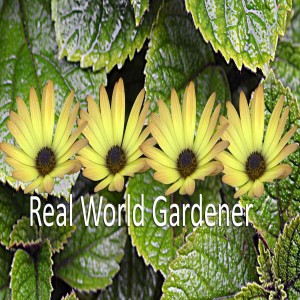
Monday Jun 26, 2023
Mushroom Plant on Real World Gardener radio show
Monday Jun 26, 2023
Monday Jun 26, 2023
KITCHEN GARDEN SEGMENT on REAL WORLD GARDENER radio show
Scientific Name: Rungia klossii
Common name: Mushroom plant
Family: Acanthaceae
Origin: New Guinea
Rungia klossii is an evergreen Perennial growing to 0.6 m x 0.6 m at a medium rate.
Soils: Suitable for: light or sandy, medium (loamy) and heavy (clay) soils.
Habitat: Mushroom plant can grow in semi-shade but not full sun in an Australian summer. It prefers dry or moist soil if grown in the ground otherwise growing in a pot is very successful.
Description:The shiny mid green have a yellowish mid-rib.
The elliptic leaves are arranged in pairs with adjacent pairs perpendicular to one another (decussate leaf arrangement mush like in a hydrangea).
Flowers: Blue flowers that appear in a cluster in ideal positions.
proteins.
Harvesting: The Mushroom plant can be harvested all year round, but the best is to harvest during the active growth period to provide a bushy growth.
Uses: In the kitchen it's used in salads, soups and wok dishes, a small cooking even increases the mushroom aroma.
Frosts: Low frosts are tolerated but lead to leaf loss.
Fun fact: Higher in protein that actual mushrooms.
What is it exactly and why is it called mushroom plant.
Let's star with, how do you love your mushrooms?
In a risotto, sautéed with scrambled eggs, in soups or salads?
Perhaps you don’t like them at all.
Here’s a way to enjoy the taste without the texture and it’s all natural.
The leaves are somewhat stiff and lightly curled at the tip.
Yes, the leaves taste like mushrooms with a crispy texture and nothing more.
| Rungia klossii: Mushroom plant |
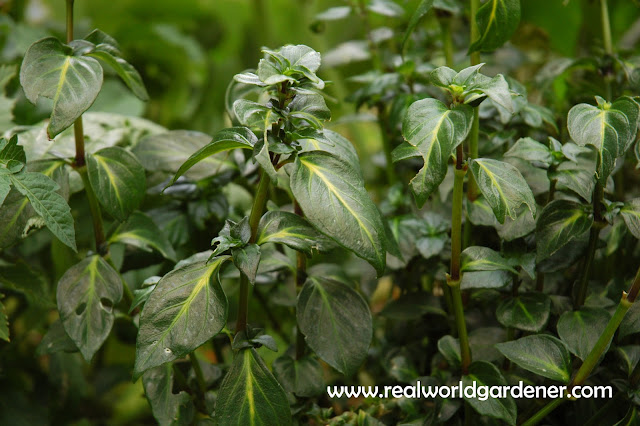 |
| Mushroom plant Photo: M Cannon |
So, let’s find out how and why, by listening to the podcast.
I've been talking with Corinne Mossati, founder of the gourmantic garden. ///thegourmanticgarden.com/
Corinne's favourite use of the plant is finely chopped into salads for that burst of flavour.
Mushroom plant is a perennial that although it grows well in tropical and sub-tropical areas, it needs protection from frost in cooler climates.
The best way to grow it there is in a pot, which by the way, has served me well over the years.
If you have any feedback email realworldgardener@gmail.com or write in to 2RRR PO Box 644 Gladesville NSW 1675

Sunday Oct 30, 2022
Grow, Harvest, Eat Yacon on Real World Gardener
Sunday Oct 30, 2022
Sunday Oct 30, 2022
THE GOOD EARTH
How to Grow and Use Yacon: Peruvian Ground Apple
Scientific Name: Smallanthus sonchifolius
Common Name: Yacon, Peruvian ground apple
Family: Asteraceae-same as daisies and sunflowers.
Plant Height & Width: 1.5m x 0.5m
If you look at the flowers they are like much smaller versions of sunflowers.
Here’s a tuber that tastes similar to a nashi pear, looks something like sweet potato on the outside, and the sugars from it aren’t absorbed by the body.
Not only that, the tubers contain a lot of juice, and the sugars that make it sweet is not absorbed by the body so you can't put on the kilos! How good is that?
Then there’s the fact that it’s easy to grow, and has small flowers that resemble sunflowers and you just can’t buy it from the supermarket or fruit and veg store.
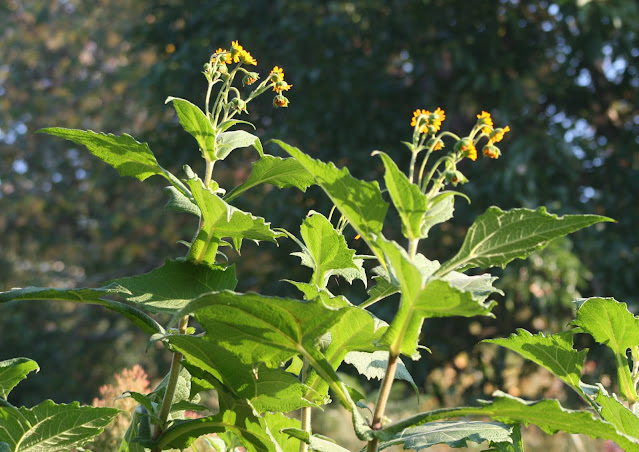 |
| Yacon plant growing in Margaret's garden |
How to Grow Yacon from Tubers?
Yacon has two types of tubers unlike ginger or turmeric.
- The tubers that you plant are attached to the main stem and are much smaller and pinkish in colour. I planted mine in early September and October was the time that it sprouted in my Sydney garden.
- If you were to receive some brown tubers that look like a brown sweet potato, that's what you eat and not what you plant.
- The edible tubers spread from the clump sideways meaning you need at least 1/2 metre of space to produce sizeable clumps.
- Can be planted in any district as they can withstand frost.
When to Harvest?
Yacon is a herbaceous perennial meaning it has a dormant period that starts when the leaves die down in late autumn.
This is the time when the tubers are ready to harvest. Simply fork up the entire crop, and harvest the large brown tubers to eat fresh, and use the small reddish rhizomes at the top to replant for next year’s crop.
What Can You Do With Yacon?
Eat it of course but how, is the thing so here are some of Margaret's tips.
- Yacon is sweet and crunchy and is great eaten fresh.
- Ever heard of Yacon chips? That's right you can make chips out of this tubber.
- Just cut up into chip sizes and drizzle some oil over the top and bake in the oven.
- Try using it in salads like Waldorf salad and wherever you would use fresh pears.
- Use it in stir fries.
- You can also juice it or cook down the juice to make syrup and use it as a sweetener.
Fun Tip from Margaret
- Running short of toilet paper, try large soft fluffy leaves like those of the Yacon plant.
But there's more uses, have a listen to the podcast.
I'm talking with Margaret Mossakowska of www.mosshouse.com.au
If you have any feedback email realworldgardener@gmail.com or write in to 2RRR PO Box 644 Gladesville NSW 1675

Sunday Oct 30, 2022
Flowers Have Their Seasons on Real World Gardener
Sunday Oct 30, 2022
Sunday Oct 30, 2022
TALKING FLOWERS
Seasonality of Flowers
Vegetables have their season when they’re available fresh and not just out of the cold room where they’ve been for 6 months or more.
What about flowers?
Many people forget that flowers have their seasons too, after all there are plenty of flowers available all year round.
 |
| Hellebores-a winter flower |
If I asked you what’s the best time of year to buy peonies would you know?
What about roses, is there a best time?
Winter Flowers

Spring Flowers
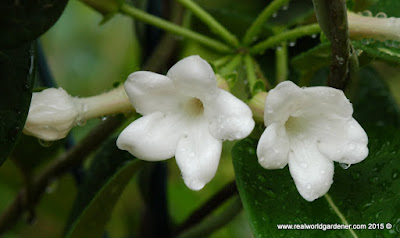 |
| Stephanotis |
Summer Flowers
Autumn Flowers
I'm talking with Nadine Brown of //www.theivyinstitute.com.au/
The scientific name for spring stars is Ipheion uniflorum, often marketed as Triteleia Stars Of Spring, rather confusingly.
Got to say one my favourite spring flowers.
If you have any feedback email realworldgardener@gmail.com or write in to 2RRR PO Box 644 Gladesville NSW 1675

Wednesday Sep 21, 2022
Leaf Celery in the Kitchen Garden
Wednesday Sep 21, 2022
Wednesday Sep 21, 2022
KITCHEN GARDEN
Leaf Celery
Scientific Name:Apium graveolens var. secalinum

- Leaf celery is a biennial plant growing to 60cm in height.
Sugo For Sure-How to Make it
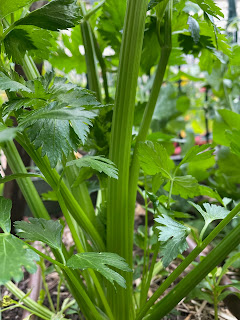
Then adding the garlic and tomatoes to make a tomato base for any Italian dish.
This winter I have practically depleted my supply of leaf celery because of the number of soups, and slow co
- Corinne suggests dehydrating the leaves to make celery leaf salt.
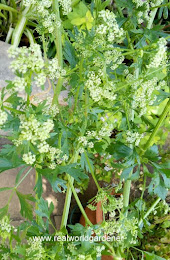 Chop the stems and leaves and make a compound celery butter.
Chop the stems and leaves and make a compound celery butter.
Much easier to grow too.
If you have any feedback email realworldgardener@gmail.com or write in to 2RRR PO Box 644 Gladesville NSW 1675

Sunday Sep 04, 2022
Choosing the Freshest Flowers on Real World Gardener
Sunday Sep 04, 2022
Sunday Sep 04, 2022
TALKING FLOWERS
Tips on Choosing the Freshest Flowers
Do you regularly buy a bunch of fresh flowers to brighten up your home?
Sometimes I cringe when I see a bunch of flowers outside some supermarkets because I know what signs to look for that tell me whether or not they’re really fresh.
But could you tell how fresh a bunch of flowers are when you see them for sale?
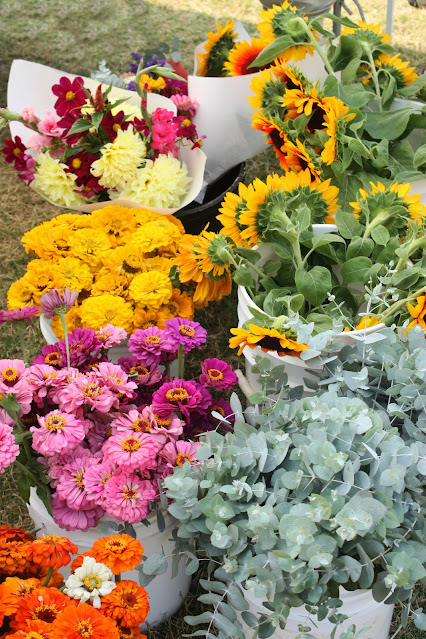
Some of the top tips are
- Keep your flowers away from the fresh bowl of fruit.
- Feel the stems to see if they’re fresh and not slimy.
- Avoid buying flowers from the roadside.
Don’t worry, Nadine Brown will tell us how lots more .
I'm talking with Nadine Brown floral educator of www.theivyinstitute.com.au
If you like buying fresh flowers you should listen to the podcast.
If you have any questions you can email us Realworldgardener@gmail.com or write in to 2rrr, PO Box 644 Gladesville NSW 1675.

Thursday Aug 11, 2022
Drying Flowers on Real World Gardener
Thursday Aug 11, 2022
Thursday Aug 11, 2022
TALKING FLOWERS
Dried Flowers and How To Do Them
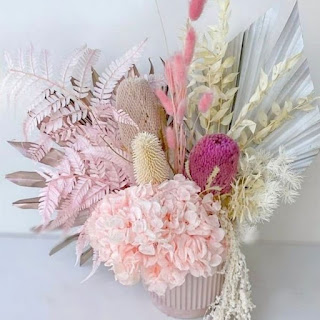
Dry Your Own.
 |
| Billy Buttons-dried by hanging upside down |
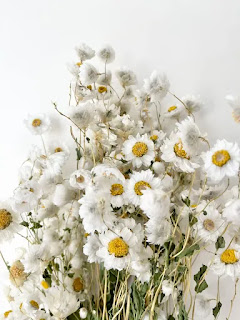 |
| Dried Rhodanthe sp. |
Surprises
HOW?
I'm talking with florist and educator, Nadine Brown, florist educator and business mentor of the Ivy Institute
Why not have a go and drying flowers from your garden?
If you have any feedback email realworldgardener@gmail.com or write in to 2RRR PO Box 644 Gladesville NSW 1675

Sunday Jul 10, 2022
What Is Sustainable Floristry in Real World Gardener
Sunday Jul 10, 2022
Sunday Jul 10, 2022
TALKING FLOWERS
Sustainable Floristry
Have you ever thought about what happens to the tons of flowers that are sold around Australia for weddings, funerals, special occasions like birthdays and anniversaries?
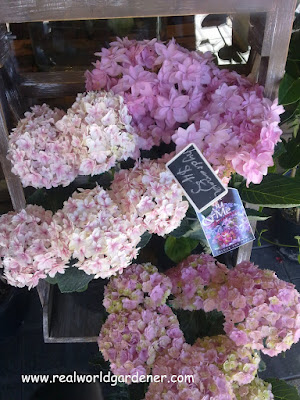 |
| Hydrangea flowers for sale |
Perhaps some of the lucky recipients might compost them when they're finished or at least throw in the in the green waste bin, but what of the others?
Did you know that approximately 10% of flowers that are sold in Australia are imported from overseas?
May not sound like much but do you know if the flowers you buy, are they imported or locally grown and does it matter?
A lot of flowers that are past their use by date end up in landfill, which I suppose means that they might decompose there but what of the mountains of wrapping, floral foam and other packing that the flowers come with?
According to the Sustainable Floristry Network "Excess packaging, plastic props, floral foam, and exotic blooms flown halfway around the globe are rationalised away because that’s what clients expect."
The next problem is that imported flowers are often sprayed with a glyphosate based chemical to prevent customers taking cuttings of the plant, before they arrive. then they are sprayed with the carcinogen methyl bromide, after entering Australia.
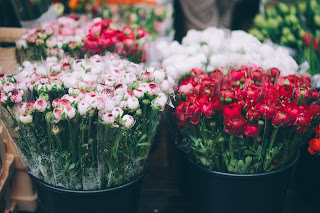
Imported flowers include Roses, Carnations, Orchids, Tropical Foliages and Chrysanthemums are these sourced from places like Kenya, Thailand, South Africa, China, New Zealand, Holland and Vietnam.
Nadine recommends that cut flowers should be bought when in season. Easily done by asking the florist where the flowers are from.
Marianne (radio host) speaks with 'Sustainable Floristry Network" ambassador and floral educator Nadine Brown of //www.theivyinstitute.com.au/home about the meaning of sustainable floristry.
So ask the question when you next buy flowers, are these flowers locally grown?
Check out the sustainable floristry website //www.sustainablefloristry.org/
If you have any questions you can email us Realworldgardener@gmail.com or write in to 2rrr, PO Box 644 Gladesville NSW 1675.

Sunday Jul 03, 2022
What are Root Knot Nematodes on Real World Gardener
Sunday Jul 03, 2022
Sunday Jul 03, 2022
PLANT DOCTOR
Nematodes part 1: the backstory
Did you know that there are 1,000,000 species of nematodes that have been identified?
- The majority of nematodes aren't plant or crop destructors.
- Then there's the problem of identifying what's going on with plants that are affected by nematodes.
- Have you ever had plants that seem to wilt despite you watering them religiously?
What they look like
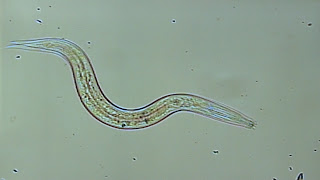
Nematodes are a round worm but because they are unable to be seen by the naked eye, I would describe them as thread like with a large head and mouth.
Arm yourself with a magnifying glass and have a look at the roots of plants that you suspect have been attacked by nematodes. You should be able to see them then.
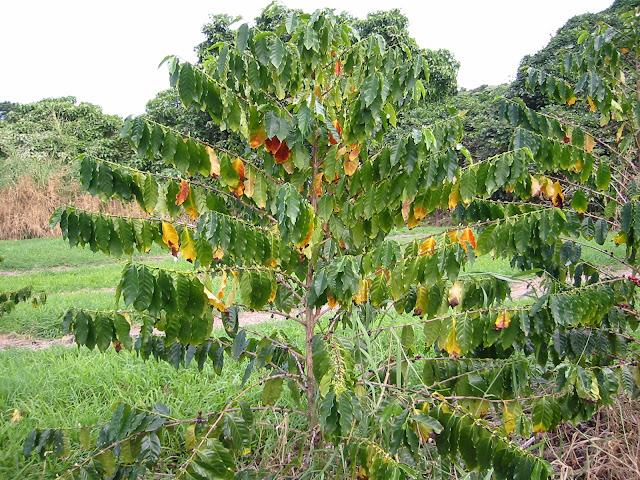 |
| Coffee tree nematode |
If nematodes are on your plants the symptoms range from perhaps they’re just stunted and don’t seem to grow much, r like the coffee tree pictured, continually looks like it's wilting despite the watering it receives. Another symptom is yellowing of foliage.
So let’s find out by listening to the podcast
Your host of Real World Gardener, Marianne is talking with Steve McGrane, agriculturist and horticulturist.
Next week we tackle the many, many ways you have to control the bad nematode, namely root knot nematodes.
If you have any questions you can email us Realworldgardener@gmail.com or write in to 2rrr, PO Box 644 Gladesville NSW 1675.

Monday Jun 20, 2022
Success with Germinating Australian Native Seeds on Real World Gardener
Monday Jun 20, 2022
Monday Jun 20, 2022
PLANT DOCTOR
Germinating Native Seed
Australian plants have evolved over thousands of years to respond to a variety of climatic extremes, from fires, to droughts to floods as well as being grazed by native animals.
 |
| Wattle seeds need boiling water treatment |
Australian plants have developed various adaptations so that the seeds of which can grow in the most suitable environment for that species of plant to survive.
So what are some of the treatments to break native seed dormancy?
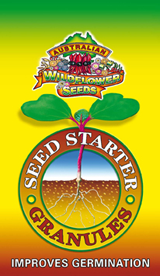
- Not all seeds need smoke chemical treatment, but there's a few that benefit from using it, in fact are difficult to germinate without it.
- Sturt Desert peas comes to mind, also Dianella, Philotheca, Xanthorrhoea, Actinotus, Callistemon and Banksia.
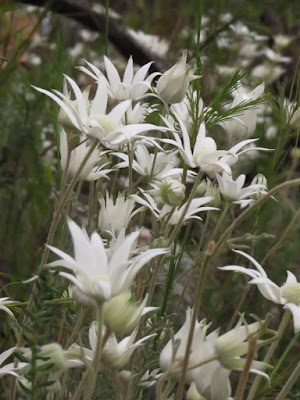 |
| Flannel flowers |
But what other tricks are there?
So let’s find out more.
I'm talking with Steve McGrane, horticulturist and agriculturist.
I hope that’s given you some idea about perhaps why some of the native seeds are more difficult to germinate than regular seeds.
In fact not everything germinates the same way, and here lies the problem.
That’s why a bit of research into the seed type you’re trying to germinate goes a long way.
If you have any questions you can email us Realworldgardener@gmail.com or write in to 2rrr, PO Box 644 Gladesville NSW 1675.

Friday May 20, 2022
Mixed Shrub Borders are in again on Real World Gardener
Friday May 20, 2022
Friday May 20, 2022
DESIGN ELEMENTS
This is a series about foliage colour and contrast and textural contrast for year round interest. The focus is also on non-general lines instead of production grown planting. In other words, plants that may not necessarily be easy to find but so worth the effort. We kick off the series with mixed shrub borders.
- MIXED SHRUB BORDER
Are they a thing of the past or a living process that still has relevance for the modern smaller garden?
 |
| Hibiscus capitolia 'Apricot Sport' |
This kind of design style has been used for hundreds of years because it has great garden appeal. There is no reason for it be considered irrelevant or 'old hat,' simply because it is so adaptable. It can be either formal or informal, full of colour and contrast or not, annuals, perennials and shrubs.
Today though, it's all about the shrubs and is a start of the design series that covers everything from mixed shrub borders, sub-shrubs, climbers, hero trees to best garden bromeliads.
I have to say, Peter Nixon and Real World Gardener's contributor for this series, focuses largely on what he calls cool sub-tropical garden or ‘cool sub-trops’ which he refers to often.
Don’t be put off if you live in a different climate because often plants adapt to a variety of climatic conditions and are worth a try.
Peter mentions the following shrubs as his 'best.'
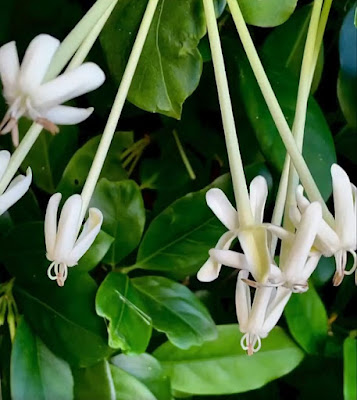 |
| Posoqueria longiflora |
- Tibouchina multifida-not more than 1.5m in height.
- Hibiscus capitolio 'apricot sport'-double flowering hibiscus, slightly pendulous. 2.5m in height.
- Posoqueria longiflora-commonly called Japanese Needle flower. Has perfumed flowers with a long white tube, height to 3m in semi-shade.
- Brunsfelsia macrantha,
- Acokanthera oblongifolia - Bushmans Poison,
- Gardenia grandiflora ’Star’,
- Rosa sanguineus,
- R. chinensis ’Ten Thousand Lights'
Let’s find out more, I'm talking with Peter Nixon of Paradisus garden design. www.paradisusgl.peternixon.com.au,
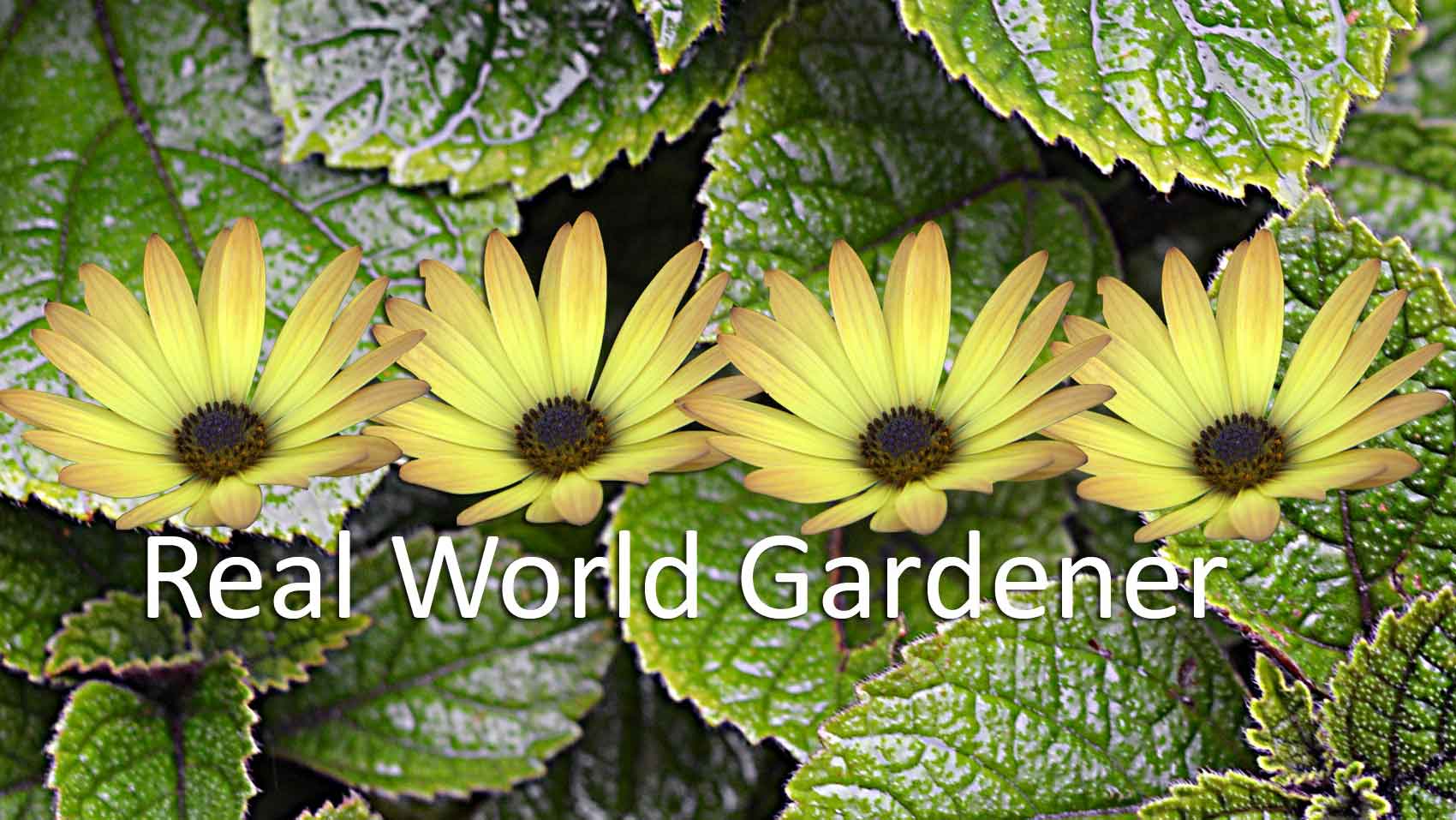
 Chop the stems and leaves and make a compound celery butter.
Chop the stems and leaves and make a compound celery butter.